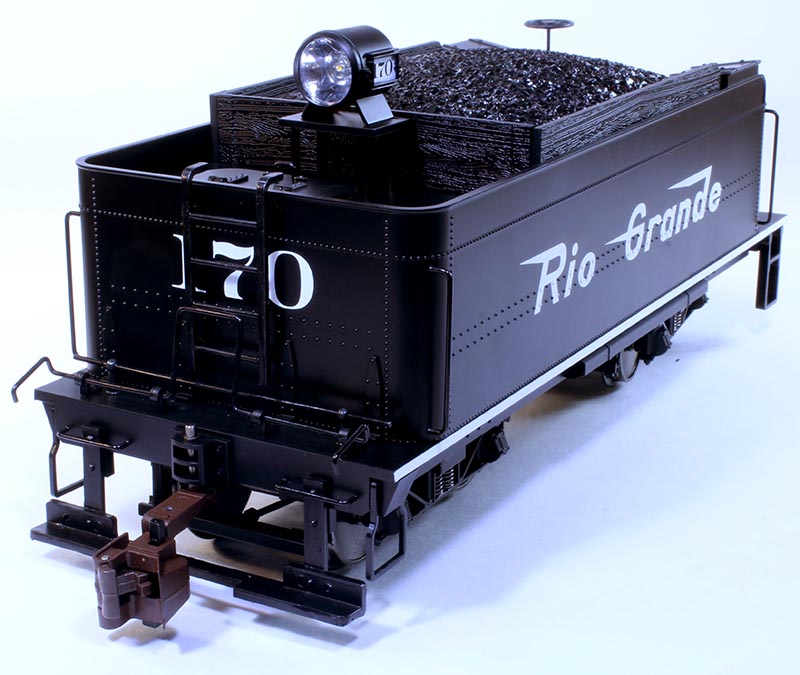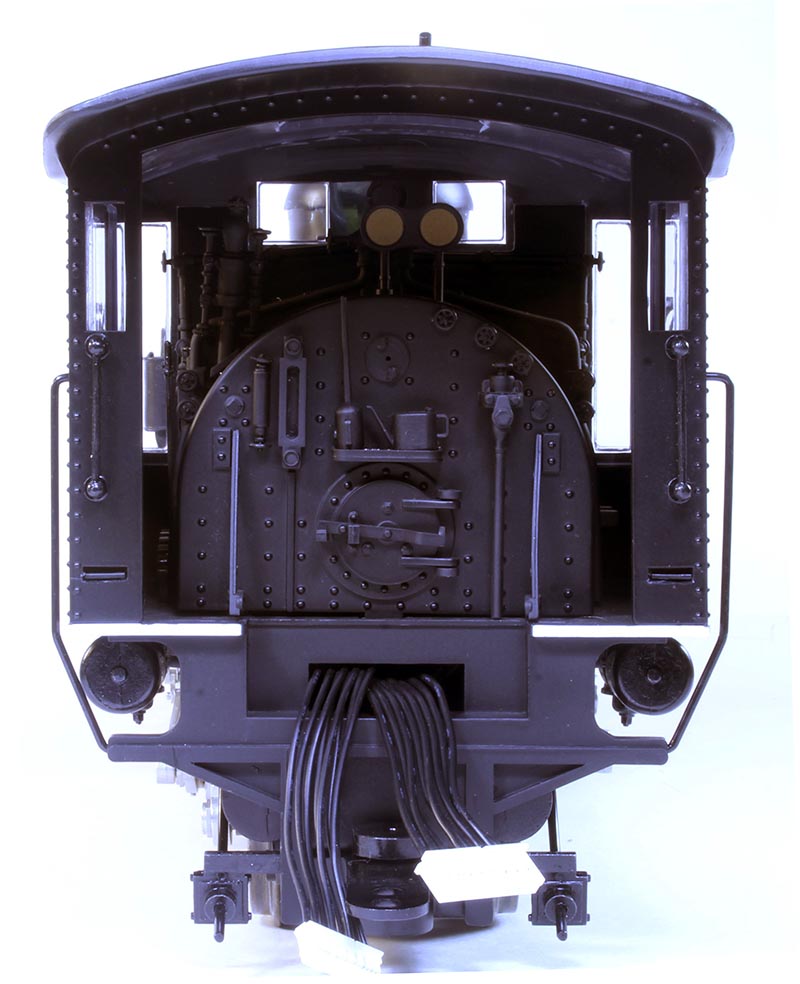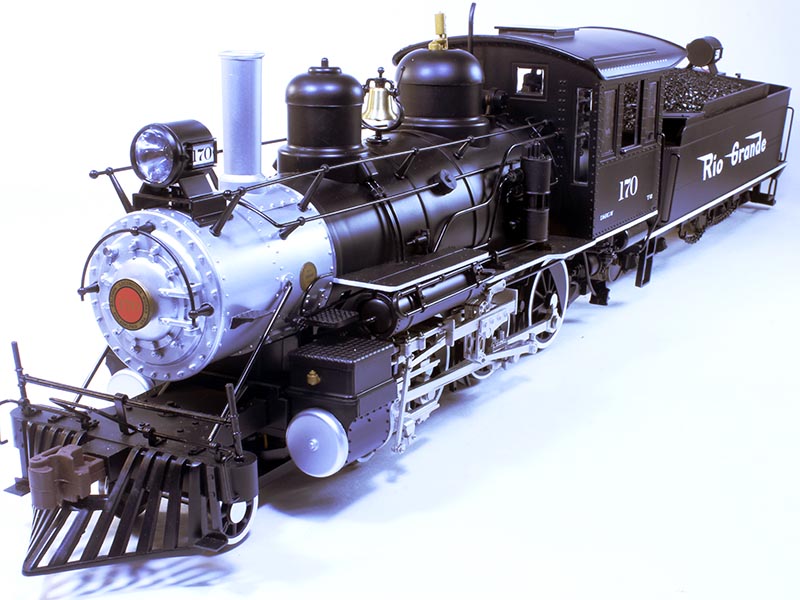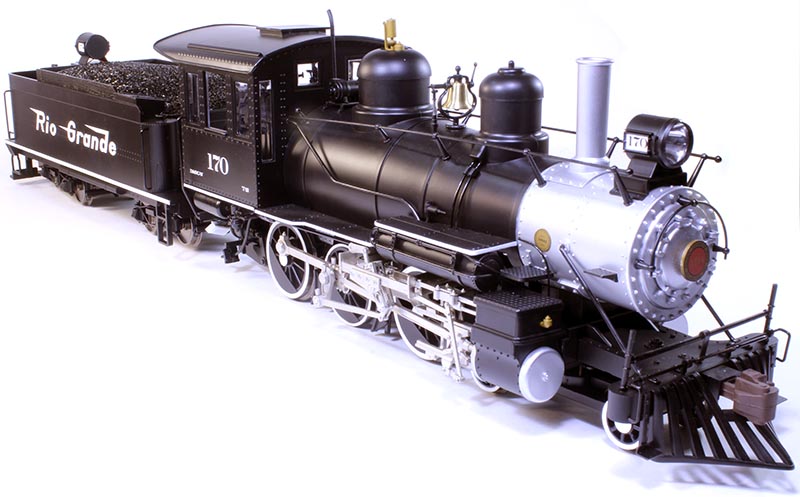By George Riley/photos by the author
The 4-6-0-wheel arrangement was the logical evolution for general purpose steam locomotives from the early and widely used 4-4-0 ‘American’ machines. As passenger and freight trains grew heavier in the 1870s and 1880s adding a third set of drivers provided additional tractive effort allowing for the handling of these heavier loads. The ten-wheeler was also favored by mountain lines with severe grades since this enhanced traction allowed operating departments to maintain their schedules over the rugged terrain.
Likewise, Bachmann’s latest release of their Large Scale 4-6-0 is an evolution in model design and manufacturing. Based on East Tennessee & Western North Carolina Railroad’s three-foot gauge Number 12 built by Baldwin Locomotive Works in 1917, this latest version of this iconic prototype has been continuously improved over the thirty plus years that the model has been available to the model railroad community.

Now in its seventh generation, the Large Scale Ten-Wheeler continues to pile up improvements. The gear train and motor have been improved with the addition of a Pittman can motor and all metal gears and gear box. This improvement alone adds to the already robust mechanism and provides remarkably quiet and smooth operation through all speed settings. When tested using a MRC 9500 power pack the locomotive drew less than 1/4 of an amp. Slow speed was a crawl being almost imperceptible. The drive train also continues using the metal side rods and Walschaerts valve gear introduced on earlier versions of the model. The floating front truck with electrical pickup has been carried over from the previous variant allowing for reliable operation, easily negotiating four-foot radius curves and medium turnouts.
This variant features a new larger, retooled tender that has smaller rivets, better wood grain detail on the coal boards and additional metal and injection molded individual details. Improved scale trucks with brake shoes and RP profile wheelsets round out the tender’s underframe. The trucks pick up power through the journals as well. In addition to the knuckle coupler on the rear buffer beam, a nicely modeled link and pin housing is also attached. An injected molded, removable coal load covers a large opening that provides access to the circuit board with removable plug-in panel.
Board mounted switches allow the model to be operated either from track or battery power, let the direction of travel be reversed, as well as having an on/off toggle to turn off the motor. The chuff rate can also be set for two or four chuffs per driver rotation. A separate plug-in board allows the modeler to convert the locomotive to DCC/Sound or Radio Control/Battery operation using any of the wide choice of decoders or other electronic modules available from third party vendors. A built in speaker allows for a quick sound hookup to a sound module.

The tender connects electrically to the locomotive with two sets of wires connected by sockets which appear to be derived from the original Aristo socket hardware.
The back head in the cab is nicely appointed with various valve handles, oil cans and piping installed. The modeler may wish to point out some of these with some paint and a small brush to make them stand out better against the black fire box. The super structure in nicely detailed with individual metal grab irons and piping in addition to a variety of factory installed injection molded details.
The locomotive has a factory installed smoke unit which can be controlled by a switch located in the smoke box and can be accessed by opening the smoke box door. As with nearly all of large- scale smoke equipped models the output is copious and realistic. One should carefully consider operating the smoke unit indoors.

The locomotive proper, weighs in at over five pounds, which when combined with its upgraded drive train will be able to haul an impressive consist. In testing the sample easily handled seven passenger cars of different pedigrees on a five-foot radius oval of track.
Along with a warranty card, a booklet of operating and maintenance instructions, and exploded drawing is included in the literature pack. For anyone who has an issue not covered by this information, Bachmann provides a helpful and responsive tech-support team to help sort out any questions or issues.
Several small packets of additional parts are included with the locomotive. One has a replacement hook and loop coupler for those who use the standard European style of coupler. Also, a metal replacement knuckle coupler to change coupler height is included. An engineer and fireman figure let the modeler breath a bit of life into their machines and a small vial of smoke fluid will fuel the smoke unit.
The review sample was decorated for Denver & Rio Grande Class 47/Denver & Rio Grande Western T12 no. 170. This class of ten-wheeler locomotives was built by Baldwin in 1883-1884 with the last two units (no. 168 and no. 169) being retired in 1939. Bachmann has chosen the later ‘Flying Grande’ paint scheme due to popular request by modelers. The decoration realistically portrays the scheme that was applied to Rio Grande narrow gauge steam locomotives post 1941. The paint work is smooth and opaque, and the lettering is crisp and sharp. The overall effect is truly impressive.
In summary, Bachmann has continued to improve on a classic model bringing it up to current standards. The result is a nicely detailed, versatile, and smooth operating large scale locomotive.
For additional information on Bachmann’s Large Scale Ten-Wheeler make sure to read The Secret Origins and Development of the Bachmann Big Hauler by Johnny Graybeal featured in the 2021 Garden Trains Annual published by White River Productions.
Bachmann Trains
1400 East Erie Avenue
Philadelphia, Pennsylvania 19124
Large Scale 4-6-0 Ten-Wheeler D&RGW ‘Flying Grande’ #170
Item #91801
MSRP – $999.00
Scale – 1:22.5




